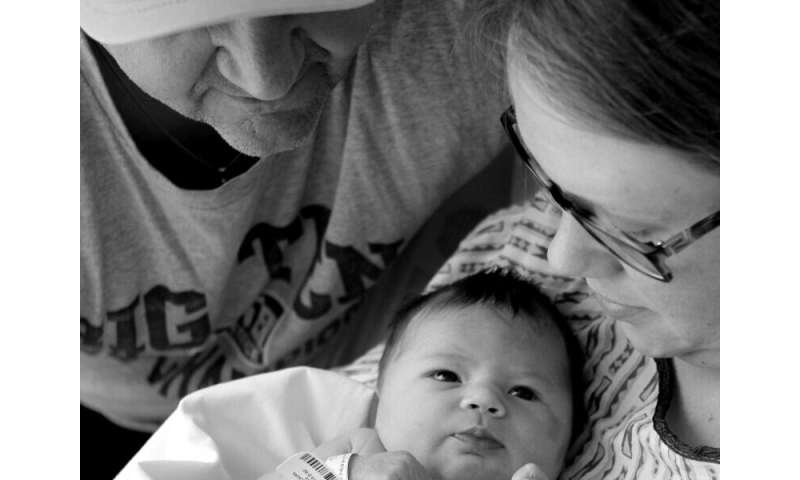‘Don’t give up:’ parents’ intuition spots a rare illness before doctors do

Parents usually know their child better than anyone, and if a parent suspects something is wrong, it probably is.
That was the case for Dan and Laura Wallenberg from Columbus, Ohio. EV Wallenberg was just 5 months old when they noticed that their daughter wasn’t eating normally. They scheduled a visit with her pediatrician.
“I knew something wasn’t right. But the doctor just thought it was a cold or something viral,” Laura said.
In the days that followed, EV wasn’t getting any better. The Wallenbergs took her to the hospital, where the staff noted that she was underweight. And when her mother mentioned that EV had been throwing up, they prescribed an anti-nausea medication and sent the family home.
At home, they put EV to bed, but she was soon awake again and throwing up. Laura noticed a rusty-colored blood stain on her shirt, where EV had vomited. They went back to the emergency room, and were admitted quickly for a full work-up.
It turned out that EV had a rare genetic disease called primary hyperoxaluria type 1 (PH1), a condition that affects about one in 58,000 people worldwide, according to the U.S. National Library of Medicine.
An ultrasound revealed numerous kidney stones. Blood work suggested that EV’s electrolytes, especially her potassium levels, were far out of range. In fact, her potassium levels were so high she was at risk of a heart attack, her mother said.
Although they knew something was wrong, doctors were still having a hard time pinpointing the rare condition. Finally, one doctor ordered the genetic testing that identified PH1 as the cause.
Laura Wallenberg’s advice to other parents?
“You can’t give up. You have to keep pushing,” she said. “If we hadn’t gone back to the ER, our story would have been very different in just a few hours.”
Sika Dunyoh, director of education programs at the National Organization for Rare Disorders, agreed that parents should keeping looking for answers if they believe something is wrong with their child.
“You know better than anyone else that something isn’t right,” she said. “Don’t stop until you get a diagnosis, because you can’t get treatment until you get a diagnosis.”
Dunyoh said a rare disease is one that affects fewer than 200,000 people in the United States. There may be as many as 7,000 rare diseases, according to the U.S. National Institutes of Health.
And, while each one affects only a small portion of the population, Dunyoh said about 30 million people are affected by rare diseases, so “it’s not that unlikely that someone will have a rare disease.”
Yet, some diseases may affect only a few dozen people. And it would be impossible for clinicians to know the details of all of them, Dunyoh said.
“We encourage doctors to remain open-minded and curious,” she said. “Many patients are frustrated because they’ve been sick for a long time. They need doctors who are good listeners.”
The internet can be a powerful tool for people with rare diseases to connect, she said, and for physicians to learn more about them.
EV is now thriving. Her disease is managed with medication that has to be taken at specific times. Her diet is restricted to foods that don’t have high amounts of oxalate, a substance that builds up in the kidneys of people with PH1.
Her father said that even though EV is only 6 years old, she knows all about her diet. “She’s even told people at Halloween that she can’t have chocolate,” he said.
Source: Read Full Article


